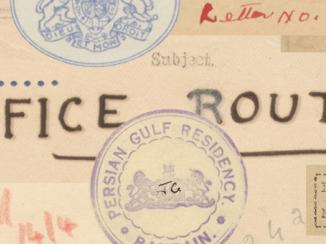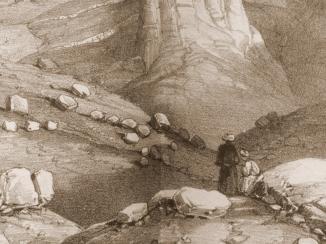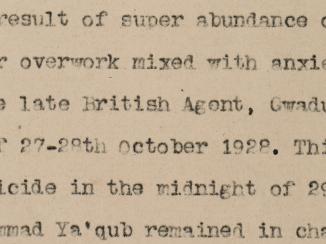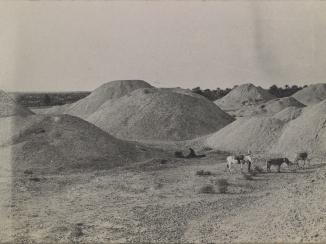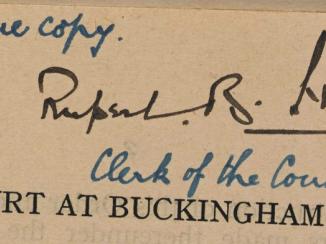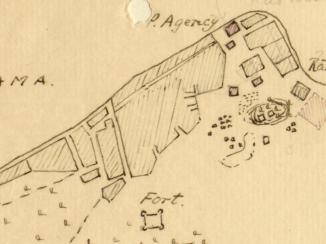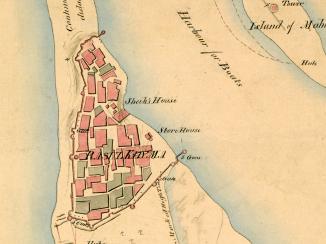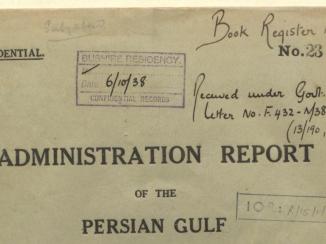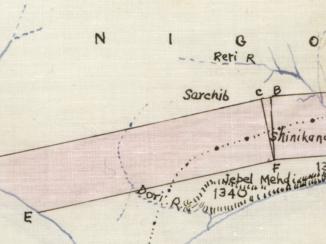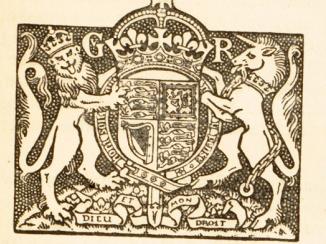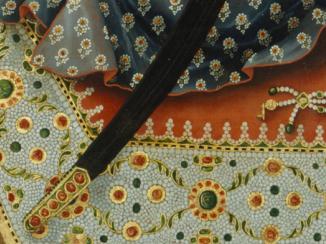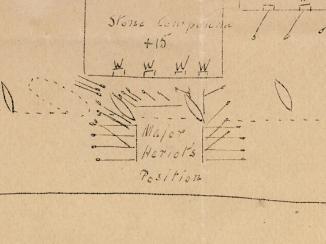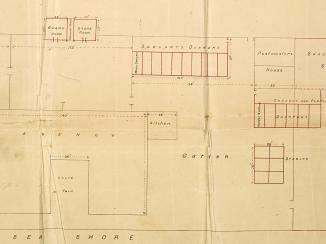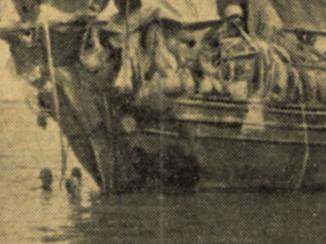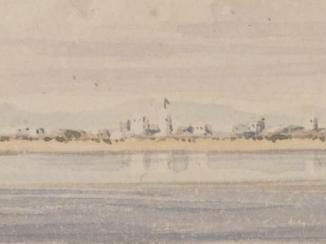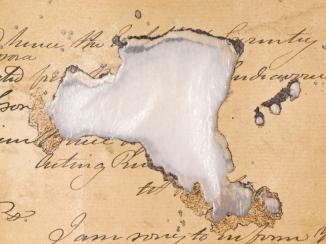Overview
By the 1920s, the ancient trade in pearls, though still the foundation of the economy of Bahrain, had begun to decline. Oil exploitation was still a way off as it was developed extensively only after the Second World War. So what was to become of Bahrain’s economy in the two interim decades?
Trade Deficit
Some answers can be found in the ‘Trade and Commerce’ files produced by Britain’s Political Agency An office of the East India Company and, later, of the British Raj, headed by an agent. in Bahrain during the period 1925–49. These are contained in the India Office The department of the British Government to which the Government of India reported between 1858 and 1947. The successor to the Court of Directors. Records and tell a story of Bahrain’s rapidly changing economy during the period. They show, for instance, that in 1925 Bahrain was in deficit. Its exports (£1,325,244) were still dominated by the declining pearl trade, in part simply because its other exports, such as building materials, cereals, fuels, and shells, were so limited. In contrast, its imports (£1,818,102) in commodities ranging from textiles and fabrics to dyeing materials, animals and oils were very much higher.
Pearling in Decline
The reliance on the pearling industry in Bahrain was seen as a problem. In 1928, Charles Belgrave, the highly influential British Adviser to the Bahrain Government, wrote that ‘the prosperity and almost the very existence of Bahrain depends upon the pearl industry’.
Over 500 pearling craft and about 15,000 men from Bahrain were employed as divers as well as a large numbers of men from Oman, Persia and the Arab coast. But the development of cultured pearls in Japan from 1916 onwards, had disastrous consequences for the traditional pearling industry. Cultured pearls could be produced in abundance and were far cheaper than those harvested in the Gulf. This threat to the traditional way of harvesting pearls was compounded after the global crash in 1929.
By 1948 the pearl industry had been hit by an embargo on the import of pearls into newly-independent India (1947–48) and was said to be ‘moribund’.
Promoting British trade
Aware of the declining pearling industry, British officials wanted to increase trade potential in Bahrain for British firms and edge out commercial rivals.
An example of this came in 1929 when a British-based manufacturer of bicycles noted an increased interest in its products from Bahrain. A British official replied that cycling was becoming popular in Bahrain and that if the supplier could make his terms attractive, he might be able to see off German and Indian competition.
Commercial interest ranged from bedsteads to margarine, motors to Scotch whisky and chocolate biscuits. One correspondent even enquired about setting up a golf course. Surely the most innovative commercial idea came in 1932 when a customs official suggested Bahrain fishermen export previously discarded shark skins to European shoe manufacturers.
Bahrain in the Maelstrom
By the mid-1930s Bahrain was in the maelstrom of region-wide economic changes. It was experiencing an influx of goods from around the world, which presented new opportunities for local businesses. However, the British authorities in Bahrain were particularly alarmed about an influx of Japanese imitations of British goods bearing labels stating that they were ‘Made in England’.
In 1934, they also began to worry about ‘poor quality’ Japanese cement. In the same year, Charles Belgrave decided to ban the import from Japan of badly insulated wiring material. Whether quality or commercial competition ultimately motivated this move, it shows the growing place of goods from all around the world in Bahraini economic life.
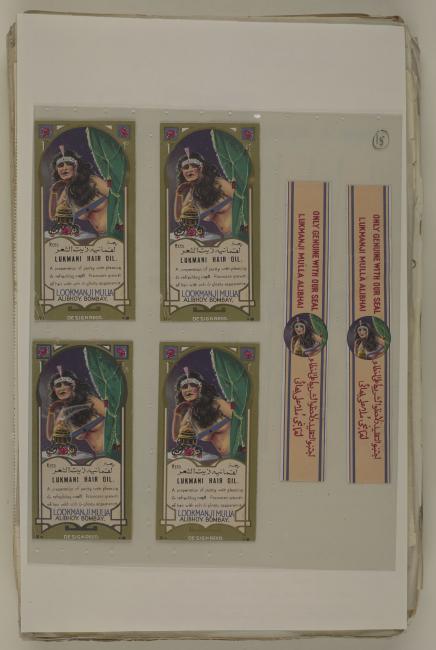
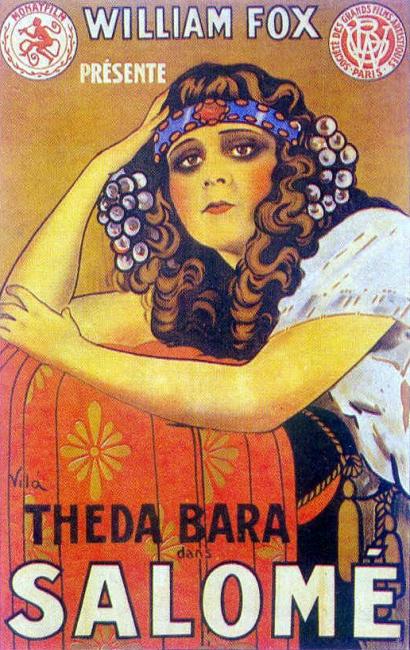
The case of trademarks tells a similar story. In 1939, a Bombay perfumer tried to register a trademark for Lukmani Hair Oil that featured a scantily-clad woman emerging from behind a curtain. The woman was likely based on popular silent movie vamp, Theda Bara. The application was promptly rejected by the British Political Agent A mid-ranking political representative (equivalent to a Consul) from the diplomatic corps of the Government of India or one of its subordinate provincial governments, in charge of a Political Agency. , who described the label as ‘unsuitable’.
In 1948, a Bahrain importer asked whether flower basket match labels it planned to import from Czechoslovakia might land the firm in trouble over trademark rights with their Swedish original. The Agency An office of the East India Company and, later, of the British Raj, headed by an agent. was increasingly having to wade into questions of commercial competition spanning Europe, Asia and the Middle East within which Bahraini firms were working.
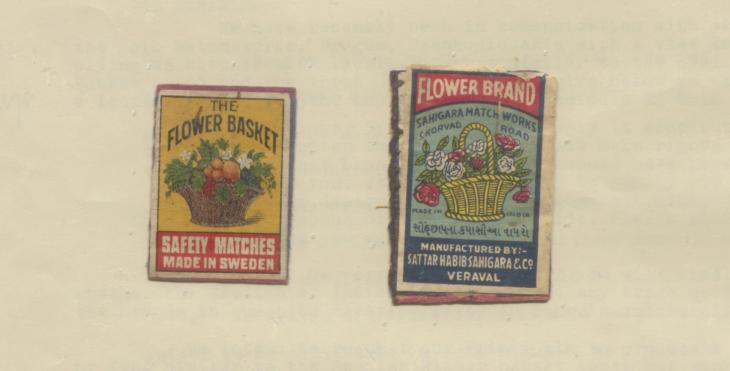
In 1950, the Agency An office of the East India Company and, later, of the British Raj, headed by an agent. agreed to publish cautionary notices warning against the infringement of trademarks in the ‘Government Gazette’, and to post copies of them on the notice board at the Agency An office of the East India Company and, later, of the British Raj, headed by an agent. .
But by this time, with the Second World War over, Bahrain’s oil fields were developing rapidly. In 1948, nearly six million tons of oil was shipped, an increase of over one million tons year-on-year. With the rapidly expanding oil industry, Bahrain saw a vast increase in the value of machinery, motor cars, lorries and tractors. The pearl industry meanwhile was ‘moribund’ and the age of oil had arrived.











